Tamara L. Chilver's Blog
June 8, 2016
Homeschool Lesson Plans for First and Second Grade
Have you ever wanted to take a glimpse inside someone else's homeschool journey? You may have no idea where to start, you may need some new ideas because what you had planned to do just wasn't working for you or your child, or you may want to compare notes because you feel like you are not doing enough or perhaps doing too much.

I'd like to invite you to view my homeschool plans for first and second grade.
The reason I have combined these grades is my younger children are only 13 months apart so I homeschool them together. I also grouped two of my older children together while homeschooling since they are only a half year and a half apart. This saves me lots of teaching time (and sanity).
For the early grades, I individually teach phonics, reading, and math unless it is a concept they both are developmentally ready to learn. All the rest of the subjects I teach together.
Since I group grades together, I pay little attention to "grade levels" on curriculum, which were originally created by publishing companies to make more money.
When I sit down to plan my school year, I focus the majority of my teaching time on the basics and use an organic approach to learning .
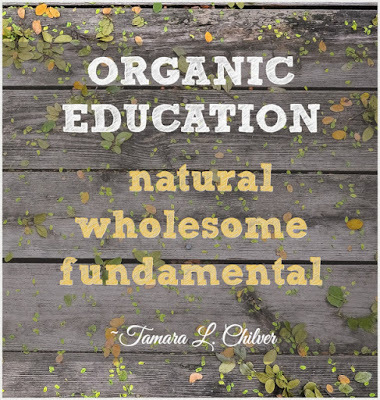
Homeschooling provides freedom. Don't become a slave to it and let it cause you stress.
I allow plenty of gaps for those teachable moments and for breaks when my children or I may need them. I also make changes during the year if needed. No big deal. It's just a plan.
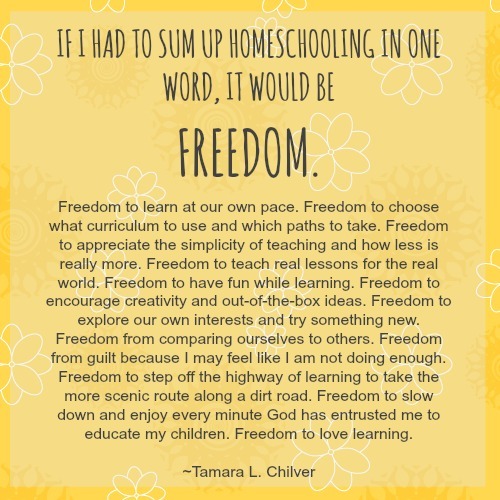
Recognize that God's plans may be very different than your plan.
Your plan may look perfect on paper, but remind yourself often that His plan is always the best. Know it is okay if only some of your goals were reached. There still has not been a year that every single item on my original plan was completed when I taught in a classroom and while homeschooling so no worries. That's real life.

We take advantage of our time while traveling.
My kids watch a lot of the programs mentioned below in our car while we are driving places. This saves more teaching time at home, and my kids really enjoy viewing them. A quiet van full of children learning equals a happy homeschool mom.
I rarely use tests or grades.
I can easily assess my children's progress while reading with them, observing how they are working, and checking their assignments. Therefore, I do not purchase tests or teacher's editions for first and second grade.
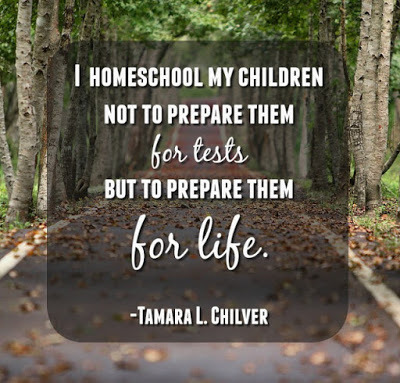
I no longer teach handwriting separately once my children can write the letters correctly.
They will be practicing their letter formation in their writing assignments.
You do not need to spend a lot of money on curriculum.
Most of the curriculum below can be found at the library. You do not need to spend a large amount of money homeschooling. I do not recommend purchasing a lot of books and DVDs unless you have multiple children and know it will be worth the investment.
READING
A Beka First Grade Readers
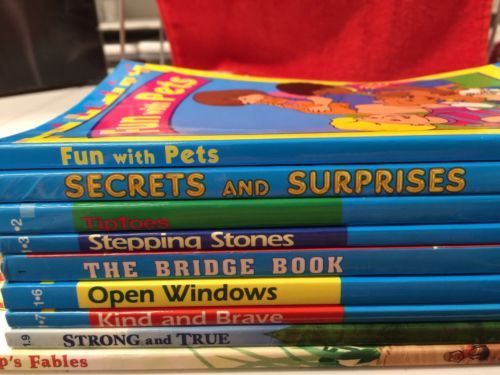
I have used the A Beka readers with all five of my kids, so I really got my money's worth. You can also grab these used at a local curriculum fair, ebay, or from a private school that is purchasing new books for the upcoming year. Phonics lessons are included in these readers. After using "newer reading methods" when I taught reading in first and second grade in the classroom, I really prefer using a traditional approach like A Beka's, which helps to lay a strong foundation in reading.
TIP: Even if your child learns to read very fast like one of my sons did, do not jump ahead and skip phonics. The lack of a strong understanding of phonics can show up years down the road. I've seen many parents have to go back to the beginning and teach phonics in the upper elementary grades because of this mistake. Take your time and teach the important building blocks of reading to prevent the tower of reading from tumbling down later.
Barron’s Get Ready-Get Set-Read Books

I like reviewing the word families and sight words that are listed on the back pages of these Barron's books . Many parents also like using Bob Books . I prefer the Barron's series because the words are not so random but are centered more on word families. Both of these series are available at most libraries.
Here are some additional book series that my kids enjoy, which were at the library.
My Daughter- Fancy Nancy, Pinkalicious, Biscuit
My Son- Henry and Mudge, Biscuit, Dear Dragon
I made reading charts and they receive a sticker when they complete a book. I reward them with something special when their chart is full. They love reading these books and will read several in a day.
When they are ready for reading independent chapter books, they begin reading these series- Imagination Station and Magic Treehouse
I use reading methods to help get them started, such as flip-flop reading, that are discussed in How to Teach Your Child . I use Book Adventure to access comprehension.
I like using reading apps, such as this one from This Reading Mama.

I love using hands-on reading activities and games for practicing sight words and phonics,such as these from Sight Words . My kids' current favorite is Book Land . It's so cute, colorful and FUN!

If a child needs additional practice with phonics, I use A Beka's Handbook for Reading for a more systematic approach.
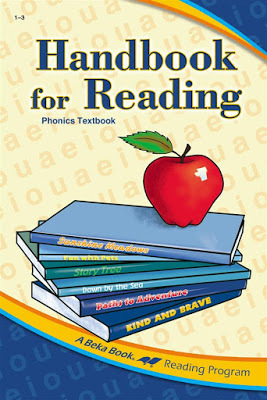
I also use Explode the Code with my children who need extra practice with phonics.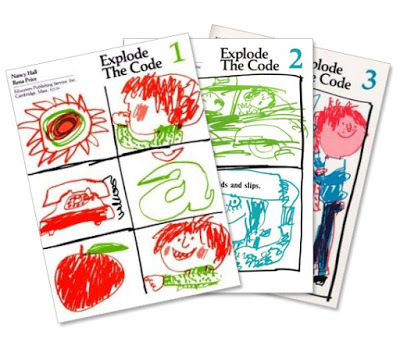 It's a traditional approach, but again, traditional works exceedingly well for long-term retention. I only use Books 1, 2, and 3. Taping a $10.00 bill to the back of the book motivates them to work quickly through the book without having me to ever remind them to practice their phonics. Score!
It's a traditional approach, but again, traditional works exceedingly well for long-term retention. I only use Books 1, 2, and 3. Taping a $10.00 bill to the back of the book motivates them to work quickly through the book without having me to ever remind them to practice their phonics. Score!
SPELLING
Read this post to see how I teach spelling.
Here are over 100 spelling activities that my kids love.
WRITING
Draw Write Now I like that my kids are learning to write complete sentences with capital letters and correct punctuation with this series. In addition, they are learning science and social studies facts. I still have all the books that my kids made. They take such pride in their illustrations.
TIP: You do not need to complete them all. Only pick and choose which topics your children are interested in. My family used three of these.

I like using this paper for beginning writers for these books. Take a close look. Children are reminded to start at the sky and stop at the grass. Too cute!
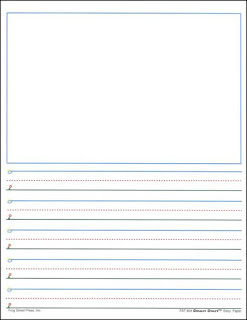
I use this paper for regular writing assignments that do not require an illustration.
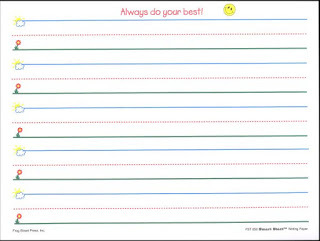
The Journal Jar is always a big hit, especially during breaks and the summer.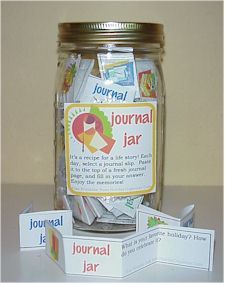 This photograph and activity is shared with permission from Organized Christmas.
This photograph and activity is shared with permission from Organized Christmas.
My children thoroughly enjoy making their own books in the Bare Books .
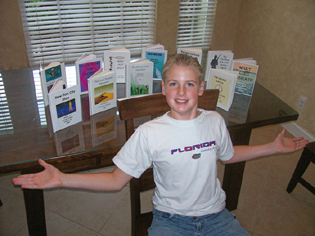
Here are over 100 ways to make writing fun during the elementary years.

My goals at this age are to be able to write a complete sentence with a capital letter and correct punctuation at the end of the sentence. I will also introduce additional punctuation and capitalization rules. My second-grader will begin to write three to five sentences on one topic and form a basic paragraph. These goals can be met using the methods above.
MATH
A-Beka First Grade
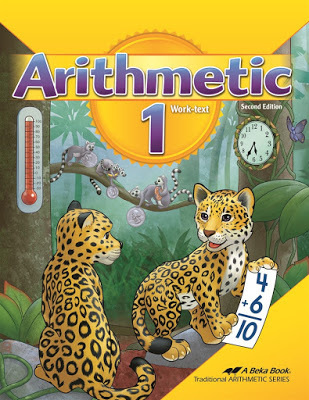
I tear out (gasp...) only the pages that I want my children to complete from this workbook. As a curriculum specialist, I love the repetition in this math curriculum. When I taught in the classroom, I saw too many children learn a concept in first grade and then forget it a few weeks or months later. A Beka helps ensure that my children have a very solid foundation in the basic math skills. On the other hand, I feel this workbook is too repetitive for the average child. Some children will need to work slowly through most of the pages and some can skip a few pages after the concept has been mastered. Let your child be your guide.
I incorporate manipulatives in our math lessons every day as mentioned in How to Teach Your Child. Here is an example with using cuisenaire rods . But you can get creative and make up your own manipulatives like I did with jelly beans and conversation hearts .
I use this workbook for first and second grade. When my children have completed it (usually during the middle of second grade), I will transition to Teaching Textbooks Grade 3. Since A Beka is advanced, this transition is pretty seamless.
Teaching Textbooks Grade 3
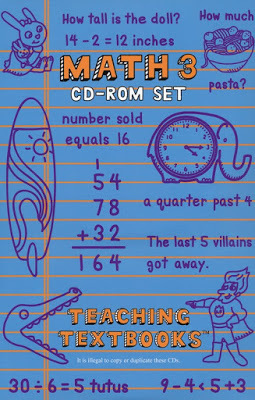
This is when I begin to catch my breath a little in teaching math as Teaching Textbooks is very independent. I am only there for assistance. Woo hoo! I use Teaching Textbooks all the way through high school. It is an investment up front but I get to use it with all of my children. You can also grab these used at a local curriculum fair or on ebay.
BIBLE
Community Bible Study Check and see if there is a CBS near you and make it a top priority to attend. I cannot rave enough about this phenomenal program. Not only do the moms get a Bible study with other women, the homeschool classes are amazing. My children have grown so much spiritually from this program. There is a very small fee for the entire year and the homeschool classes usually fill up fast, so be sure to register several months ahead. The homeschool families at the CBS I attend meet once a month afterwards for lunch at a park or another location.
Nest Family & Friends Animated Classics
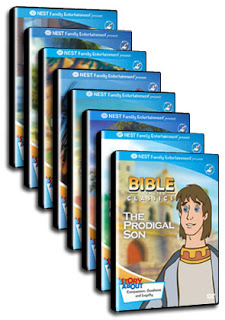
Friends and Heroes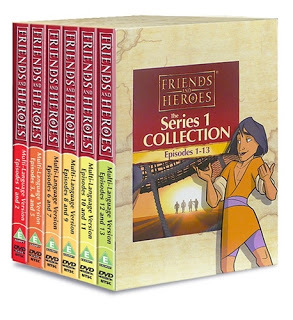 Both of these video series are available at many libraries.
Both of these video series are available at many libraries.
SCIENCE

Wild Kratts My son is crazy over this series and is now an animal expert! He is even having a Wild Kratts birthday party this summer.
Magic Schoolbus
Sid the Science Kid
Steve Spangler Science Experiments Sick Science Spangler Science
I have a family friend who does hands-on experiments with my kids during the summer. I also purchase several experiment kits from the FPEA homeschool convention, as well as from Amazon, to use during the school year. My kids actually like receiving them as birthday gifts and for rewards. Here are some good starter experiment kits for little ones.
Unit studies- We complete a lot of hands-on science lessons that tie into our unit studies. For example, we will be learning about the human body this school year, and Play and Find Out About the Human Body is my favorite resource for body experiments for this age.
HISTORY
Liberty Kids DVDs
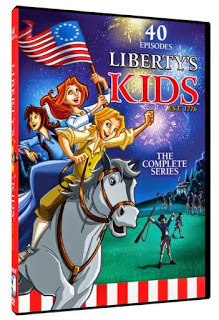
My little ones also watch Drive Thru History with my older boys.
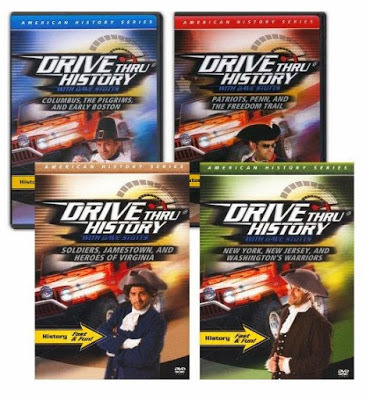
GEOGRAPHY
Puzzle maps like this one
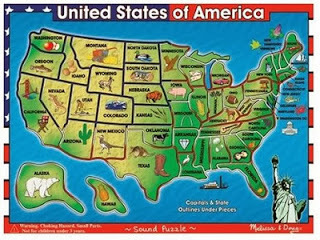
We use our Leap Frog Explorer interactive globe all the time.
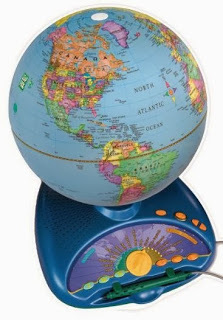
Stack the States app
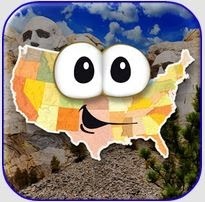
Geography from A to Z
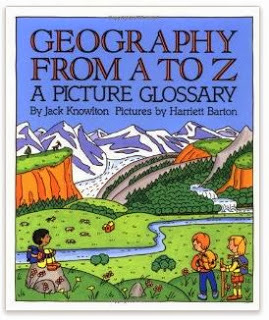
UNIT STUDIES
During unit studies, we read books and complete activities that relate to the topic we are learning about. You can see how I teach unit studies in several of my posts on this site. We also do a lot of fun holiday learning activities as well. Here is a physical science unit study and a spontaneous unit study on chocolate we did a few years ago. The idea is to center your lessons around a topic that excites your children about learning. Here is a list of the unit studies that I have planned for this upcoming school year. Some additional topics will be planned around certain vacations and homeschool field trips.
September- NovemberHuman Body
JanuaryFlorida History
February- MarchPlants
AprilEnvironmental Studies
EXTRA ACTIVITIES
Community Bible Study Homeschool Classes
Funtastic Fridays Homeschool Co-op Classes
Field Trips with Homeschool Group
SAINTS PE
Son- Soccer, Football, Basketball
Daughter- Cheerleading, Gymnastics
What does this look like in our everyday life that is speeding by at the speed of light?
I prefer to keep the daily schedule as simple as possible. This way I don't feel overwhelmed homeschooling four children. For my close friends who know I am an OCD planner, my daily schedule may actually surprise them. I don't keep daily lesson plans like I did for my first 10 years of homeschooling. (Thank you Homelife Academy for not requiring me to complete them!) Instead, I have a small list taped on the inside of my kitchen cabinet to help me keep focused throughout the day.
Individually TeachPhonics, Reading, Math
Together Pledge, calendarBible, prayers Unit Study Spelling Writing Fun Activity
I always end with a fun activity- a learning game, art project, kid's recipe, etc. This approach always keeps my kids excited about school the next day. The only downside is when they still want to "play" school on Saturday and Sunday mornings.
While my kids are at SAINTS PE , I use that as my planning time. I gather all the books and materials that I will need for the upcoming school week and place them in a basket organized by days of the week. This way all I have to do each morning is grab my coffee and the items that I need to get started. Easy peasy!
Many more teaching tips are listed in How to Teach Your Child , as well as several time-saving tips can be found in Simplify Your Homeschool Day .
And that's it folks. No fluff, no overwhelming plans to implement, and no expensive curriculum to purchase. I hope this post encourages you in your homeschool journey.
Many blessings,



I'd like to invite you to view my homeschool plans for first and second grade.
The reason I have combined these grades is my younger children are only 13 months apart so I homeschool them together. I also grouped two of my older children together while homeschooling since they are only a half year and a half apart. This saves me lots of teaching time (and sanity).
For the early grades, I individually teach phonics, reading, and math unless it is a concept they both are developmentally ready to learn. All the rest of the subjects I teach together.
Since I group grades together, I pay little attention to "grade levels" on curriculum, which were originally created by publishing companies to make more money.
When I sit down to plan my school year, I focus the majority of my teaching time on the basics and use an organic approach to learning .

Homeschooling provides freedom. Don't become a slave to it and let it cause you stress.
I allow plenty of gaps for those teachable moments and for breaks when my children or I may need them. I also make changes during the year if needed. No big deal. It's just a plan.

Recognize that God's plans may be very different than your plan.
Your plan may look perfect on paper, but remind yourself often that His plan is always the best. Know it is okay if only some of your goals were reached. There still has not been a year that every single item on my original plan was completed when I taught in a classroom and while homeschooling so no worries. That's real life.

We take advantage of our time while traveling.
My kids watch a lot of the programs mentioned below in our car while we are driving places. This saves more teaching time at home, and my kids really enjoy viewing them. A quiet van full of children learning equals a happy homeschool mom.
I rarely use tests or grades.
I can easily assess my children's progress while reading with them, observing how they are working, and checking their assignments. Therefore, I do not purchase tests or teacher's editions for first and second grade.

I no longer teach handwriting separately once my children can write the letters correctly.
They will be practicing their letter formation in their writing assignments.
You do not need to spend a lot of money on curriculum.
Most of the curriculum below can be found at the library. You do not need to spend a large amount of money homeschooling. I do not recommend purchasing a lot of books and DVDs unless you have multiple children and know it will be worth the investment.
READING
A Beka First Grade Readers

I have used the A Beka readers with all five of my kids, so I really got my money's worth. You can also grab these used at a local curriculum fair, ebay, or from a private school that is purchasing new books for the upcoming year. Phonics lessons are included in these readers. After using "newer reading methods" when I taught reading in first and second grade in the classroom, I really prefer using a traditional approach like A Beka's, which helps to lay a strong foundation in reading.
TIP: Even if your child learns to read very fast like one of my sons did, do not jump ahead and skip phonics. The lack of a strong understanding of phonics can show up years down the road. I've seen many parents have to go back to the beginning and teach phonics in the upper elementary grades because of this mistake. Take your time and teach the important building blocks of reading to prevent the tower of reading from tumbling down later.
Barron’s Get Ready-Get Set-Read Books

I like reviewing the word families and sight words that are listed on the back pages of these Barron's books . Many parents also like using Bob Books . I prefer the Barron's series because the words are not so random but are centered more on word families. Both of these series are available at most libraries.
Here are some additional book series that my kids enjoy, which were at the library.
My Daughter- Fancy Nancy, Pinkalicious, Biscuit
My Son- Henry and Mudge, Biscuit, Dear Dragon
I made reading charts and they receive a sticker when they complete a book. I reward them with something special when their chart is full. They love reading these books and will read several in a day.
When they are ready for reading independent chapter books, they begin reading these series- Imagination Station and Magic Treehouse
I use reading methods to help get them started, such as flip-flop reading, that are discussed in How to Teach Your Child . I use Book Adventure to access comprehension.
I like using reading apps, such as this one from This Reading Mama.

I love using hands-on reading activities and games for practicing sight words and phonics,such as these from Sight Words . My kids' current favorite is Book Land . It's so cute, colorful and FUN!

If a child needs additional practice with phonics, I use A Beka's Handbook for Reading for a more systematic approach.

I also use Explode the Code with my children who need extra practice with phonics.
 It's a traditional approach, but again, traditional works exceedingly well for long-term retention. I only use Books 1, 2, and 3. Taping a $10.00 bill to the back of the book motivates them to work quickly through the book without having me to ever remind them to practice their phonics. Score!
It's a traditional approach, but again, traditional works exceedingly well for long-term retention. I only use Books 1, 2, and 3. Taping a $10.00 bill to the back of the book motivates them to work quickly through the book without having me to ever remind them to practice their phonics. Score!SPELLING
Read this post to see how I teach spelling.
Here are over 100 spelling activities that my kids love.

WRITING
Draw Write Now I like that my kids are learning to write complete sentences with capital letters and correct punctuation with this series. In addition, they are learning science and social studies facts. I still have all the books that my kids made. They take such pride in their illustrations.
TIP: You do not need to complete them all. Only pick and choose which topics your children are interested in. My family used three of these.

I like using this paper for beginning writers for these books. Take a close look. Children are reminded to start at the sky and stop at the grass. Too cute!

I use this paper for regular writing assignments that do not require an illustration.

The Journal Jar is always a big hit, especially during breaks and the summer.
 This photograph and activity is shared with permission from Organized Christmas.
This photograph and activity is shared with permission from Organized Christmas.
My children thoroughly enjoy making their own books in the Bare Books .

Here are over 100 ways to make writing fun during the elementary years.

My goals at this age are to be able to write a complete sentence with a capital letter and correct punctuation at the end of the sentence. I will also introduce additional punctuation and capitalization rules. My second-grader will begin to write three to five sentences on one topic and form a basic paragraph. These goals can be met using the methods above.
MATH
A-Beka First Grade

I tear out (gasp...) only the pages that I want my children to complete from this workbook. As a curriculum specialist, I love the repetition in this math curriculum. When I taught in the classroom, I saw too many children learn a concept in first grade and then forget it a few weeks or months later. A Beka helps ensure that my children have a very solid foundation in the basic math skills. On the other hand, I feel this workbook is too repetitive for the average child. Some children will need to work slowly through most of the pages and some can skip a few pages after the concept has been mastered. Let your child be your guide.
I incorporate manipulatives in our math lessons every day as mentioned in How to Teach Your Child. Here is an example with using cuisenaire rods . But you can get creative and make up your own manipulatives like I did with jelly beans and conversation hearts .
I use this workbook for first and second grade. When my children have completed it (usually during the middle of second grade), I will transition to Teaching Textbooks Grade 3. Since A Beka is advanced, this transition is pretty seamless.
Teaching Textbooks Grade 3

This is when I begin to catch my breath a little in teaching math as Teaching Textbooks is very independent. I am only there for assistance. Woo hoo! I use Teaching Textbooks all the way through high school. It is an investment up front but I get to use it with all of my children. You can also grab these used at a local curriculum fair or on ebay.
BIBLE
Community Bible Study Check and see if there is a CBS near you and make it a top priority to attend. I cannot rave enough about this phenomenal program. Not only do the moms get a Bible study with other women, the homeschool classes are amazing. My children have grown so much spiritually from this program. There is a very small fee for the entire year and the homeschool classes usually fill up fast, so be sure to register several months ahead. The homeschool families at the CBS I attend meet once a month afterwards for lunch at a park or another location.
Nest Family & Friends Animated Classics

Friends and Heroes
 Both of these video series are available at many libraries.
Both of these video series are available at many libraries.SCIENCE

Wild Kratts My son is crazy over this series and is now an animal expert! He is even having a Wild Kratts birthday party this summer.
Magic Schoolbus
Sid the Science Kid
Steve Spangler Science Experiments Sick Science Spangler Science
I have a family friend who does hands-on experiments with my kids during the summer. I also purchase several experiment kits from the FPEA homeschool convention, as well as from Amazon, to use during the school year. My kids actually like receiving them as birthday gifts and for rewards. Here are some good starter experiment kits for little ones.
Unit studies- We complete a lot of hands-on science lessons that tie into our unit studies. For example, we will be learning about the human body this school year, and Play and Find Out About the Human Body is my favorite resource for body experiments for this age.
HISTORY
Liberty Kids DVDs

My little ones also watch Drive Thru History with my older boys.

GEOGRAPHY
Puzzle maps like this one

We use our Leap Frog Explorer interactive globe all the time.

Stack the States app

Geography from A to Z

UNIT STUDIES
During unit studies, we read books and complete activities that relate to the topic we are learning about. You can see how I teach unit studies in several of my posts on this site. We also do a lot of fun holiday learning activities as well. Here is a physical science unit study and a spontaneous unit study on chocolate we did a few years ago. The idea is to center your lessons around a topic that excites your children about learning. Here is a list of the unit studies that I have planned for this upcoming school year. Some additional topics will be planned around certain vacations and homeschool field trips.
September- NovemberHuman Body
JanuaryFlorida History
February- MarchPlants
AprilEnvironmental Studies
EXTRA ACTIVITIES
Community Bible Study Homeschool Classes
Funtastic Fridays Homeschool Co-op Classes
Field Trips with Homeschool Group
SAINTS PE
Son- Soccer, Football, Basketball
Daughter- Cheerleading, Gymnastics
What does this look like in our everyday life that is speeding by at the speed of light?
I prefer to keep the daily schedule as simple as possible. This way I don't feel overwhelmed homeschooling four children. For my close friends who know I am an OCD planner, my daily schedule may actually surprise them. I don't keep daily lesson plans like I did for my first 10 years of homeschooling. (Thank you Homelife Academy for not requiring me to complete them!) Instead, I have a small list taped on the inside of my kitchen cabinet to help me keep focused throughout the day.
Individually TeachPhonics, Reading, Math
Together Pledge, calendarBible, prayers Unit Study Spelling Writing Fun Activity
I always end with a fun activity- a learning game, art project, kid's recipe, etc. This approach always keeps my kids excited about school the next day. The only downside is when they still want to "play" school on Saturday and Sunday mornings.
While my kids are at SAINTS PE , I use that as my planning time. I gather all the books and materials that I will need for the upcoming school week and place them in a basket organized by days of the week. This way all I have to do each morning is grab my coffee and the items that I need to get started. Easy peasy!
Many more teaching tips are listed in How to Teach Your Child , as well as several time-saving tips can be found in Simplify Your Homeschool Day .
And that's it folks. No fluff, no overwhelming plans to implement, and no expensive curriculum to purchase. I hope this post encourages you in your homeschool journey.
Many blessings,



Published on June 08, 2016 16:37
May 16, 2015
What is Organic Homeschooling?
Throughout my 23 years in education, I have found myself using most
teaching styles
. During different seasons, I have used traditional, classical, unit studies, Montessori, and unschooling approaches. I saw the strengths of each method and wanted to incorporate them all. I was elated when the new buzzword “eclectic” became popular about a decade ago because I felt like there was finally a word to describe how I taught.
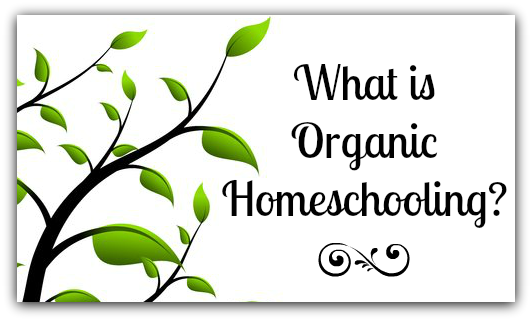
But as time went on, I discovered a better word to describe my family’s homeschool- ORGANIC. The term “organic” seems to be a common word nowadays. It can be used to describe types of food, businesses, churches, and even more.
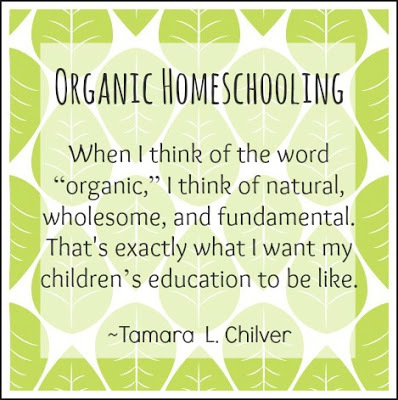

Learning becomes a natural process.
I no longer feel pressure from what others are doing. I remind myself that my children are created uniquely by the Lord and He has a specific plan for each of them.Frustration is rarely present when things don’t go as I plan. I realized that most of my frustration in homeschooling was when things were not going my way. It was simply a control issue. I wanted my lesson plans and goals to be met on my timetable. I didn't welcome life's interruptions as possible lessons but viewed them as hindrances to my original plans. When I learned to lay aside my plans for His plans, homeschooling became a joy and not a burden.I stopped pushing my children to finish the curriculum. When I find myself rushing to “finish the book,” I am missing the beauty of homeschooling. Our homeschool days should be about teaching the child, not the curriculum. Read more HERE .
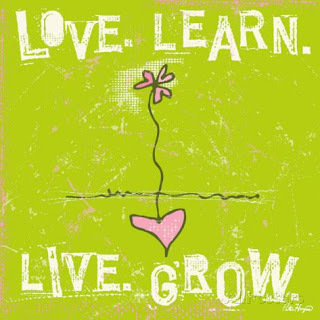
A wholesome learning environment is created.
I strive to provide the best nutrients in our soil to produce the sweetest fruit. One way I do this is by using teaching materials that are rooted in God’s word.I use unit studies that incorporate most subjects, instead of teaching individual subjects separately. This approach is teaching learning as a whole, which leads to better retention and is less time-consuming for the student and teacher.
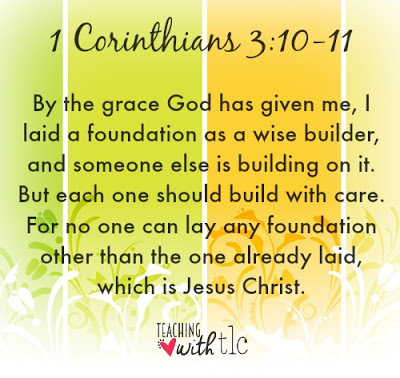 Build upon the foundation with the fundamentals of a solid education.
Build upon the foundation with the fundamentals of a solid education.
I choose to focus the majority of my teaching time on the Bible and building upon that foundation with the core subjects- reading, writing, and math. Read more HERE .I avoid using "preservatives and extra additives" by eliminating busywork. To be honest, homeschooling four children makes my teaching time valuable. I cut right to the chase and avoid any "fluff" in the books or curriculum I use. Three hours of solid teaching time with active learning is much more important to me than a full day of teaching with little real learning.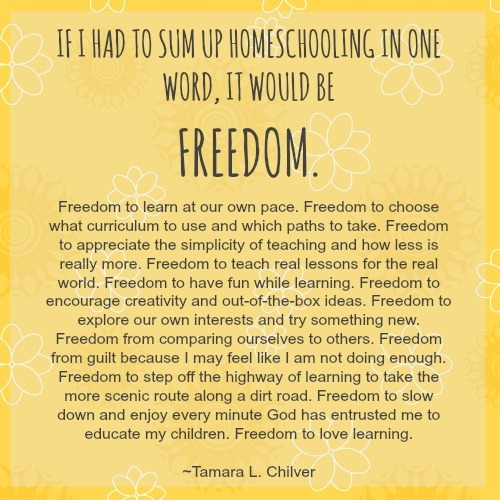
If I had to sum up organic homeschooling in one word,it would be FREEDOM.
Freedom to learn at our own pace. Freedom to choose what curriculum to use and which paths to take. Freedom to appreciate the simplicity of teaching and how less is really more. Freedom to teach real lessons for the real world. Freedom to have fun while learning. Freedom to encourage creativity and out-of-the-box ideas. Freedom to explore our own interests and try something new. Freedom from comparing myself to others. Freedom from guilt because I may feel like I am not doing enough. Freedom to step off the highway of learning to take the more scenic route along a dirt road. Freedom to slow down and enjoy every minute God has entrusted me to educate my children. Freedom to love learning.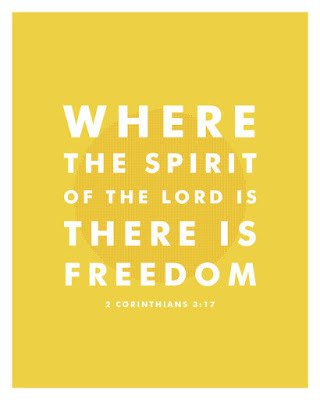
As a home educator, it is not my responsibility to teach my children everything. It is my responsibility to create life-long learners by providing the best teaching tools while cultivating a passion for learning. That is why teaching organically best describes my family's homeschool approach.
Wishing you much joy in your homeschooling journey,
UPDATE:I recently listened to an excellent recording from the FPEA convention- 10 Benefits to Teaching With a Natural Approach . It was everything I believe learning and teaching should encompass. If I sat down with a homeschool mom, this is exactly the same advice I would give her. Bravo Geography Matters. You really hit it out of the park with this presentation!



But as time went on, I discovered a better word to describe my family’s homeschool- ORGANIC. The term “organic” seems to be a common word nowadays. It can be used to describe types of food, businesses, churches, and even more.

When I think of the word “organic,” I think of natural, wholesome, and fundamental. That's exactly what I want my children’s education to be like.

Learning becomes a natural process.
I no longer feel pressure from what others are doing. I remind myself that my children are created uniquely by the Lord and He has a specific plan for each of them.Frustration is rarely present when things don’t go as I plan. I realized that most of my frustration in homeschooling was when things were not going my way. It was simply a control issue. I wanted my lesson plans and goals to be met on my timetable. I didn't welcome life's interruptions as possible lessons but viewed them as hindrances to my original plans. When I learned to lay aside my plans for His plans, homeschooling became a joy and not a burden.I stopped pushing my children to finish the curriculum. When I find myself rushing to “finish the book,” I am missing the beauty of homeschooling. Our homeschool days should be about teaching the child, not the curriculum. Read more HERE .

A wholesome learning environment is created.
I strive to provide the best nutrients in our soil to produce the sweetest fruit. One way I do this is by using teaching materials that are rooted in God’s word.I use unit studies that incorporate most subjects, instead of teaching individual subjects separately. This approach is teaching learning as a whole, which leads to better retention and is less time-consuming for the student and teacher.
 Build upon the foundation with the fundamentals of a solid education.
Build upon the foundation with the fundamentals of a solid education. I choose to focus the majority of my teaching time on the Bible and building upon that foundation with the core subjects- reading, writing, and math. Read more HERE .I avoid using "preservatives and extra additives" by eliminating busywork. To be honest, homeschooling four children makes my teaching time valuable. I cut right to the chase and avoid any "fluff" in the books or curriculum I use. Three hours of solid teaching time with active learning is much more important to me than a full day of teaching with little real learning.

If I had to sum up organic homeschooling in one word,it would be FREEDOM.
Freedom to learn at our own pace. Freedom to choose what curriculum to use and which paths to take. Freedom to appreciate the simplicity of teaching and how less is really more. Freedom to teach real lessons for the real world. Freedom to have fun while learning. Freedom to encourage creativity and out-of-the-box ideas. Freedom to explore our own interests and try something new. Freedom from comparing myself to others. Freedom from guilt because I may feel like I am not doing enough. Freedom to step off the highway of learning to take the more scenic route along a dirt road. Freedom to slow down and enjoy every minute God has entrusted me to educate my children. Freedom to love learning.

As a home educator, it is not my responsibility to teach my children everything. It is my responsibility to create life-long learners by providing the best teaching tools while cultivating a passion for learning. That is why teaching organically best describes my family's homeschool approach.
Wishing you much joy in your homeschooling journey,

UPDATE:I recently listened to an excellent recording from the FPEA convention- 10 Benefits to Teaching With a Natural Approach . It was everything I believe learning and teaching should encompass. If I sat down with a homeschool mom, this is exactly the same advice I would give her. Bravo Geography Matters. You really hit it out of the park with this presentation!


Published on May 16, 2015 10:50
March 24, 2015
Spring Trash Candy- An extra sweet and salty treat!
Today is the first day of spring and my kids wanted to make a spring treat. We LOVE the Classic White Trash Candy that I shared with you seven years ago, so we decided to add our own spin to it to make it more spring-like. My kids came up with this recipe- Spring Trash Candy.

We used pastel-colored M&Ms, pastel-colored spring sprinkles, and substituted the corn chex cereal with Fruit Loops, which makes the classic sweet and salty candy treat EXTRA sweet.
 Spring Trash Candy
Spring Trash Candy
1 c. pastel colored M&Ms1 1/2 c. Fruit Loops cereal2 c. pretzel sticks1 c. cocktail peanuts1 oz. pastel-colored/spring sprinkles14 oz. vanilla almond bark
Mix the first five ingredients together in a large bowl. Melt the vanilla almond bark in the microwave, and pour it over the mixed ingredients. Mix well without breaking the cereal and pretzels and spread it thin on wax paper. Let it cool off and harden then break into chunks and place in cute containers. This makes great Easter gifts for teachers, neighbors, family, and friends.
Enjoy this super simple but highly addicting treat,

Click here for the Classic White Trash Candy Recipe.


Published on March 24, 2015 19:58
March 14, 2015
FUN Ways to Celebrate St. Patrick's Day
My family is super excited to start the celebration of St. Patrick. There are so many fun activities to do on March 17th, and here are a few of my family's faves.
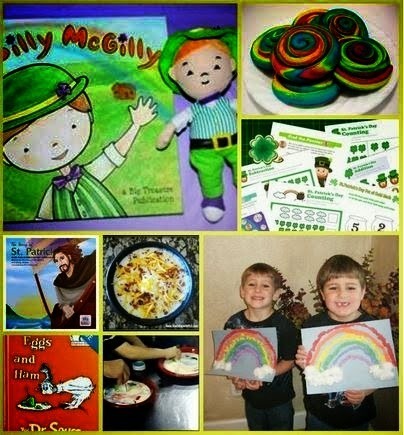
Silly McGilly visits our house on St. Patrick's Day and he loves to play tricks on little ones, such as: hiding toys, turning things upside down, changing toilet water green, and leaving cabinet doors open (oh wait, that's my 21 year-old son!)
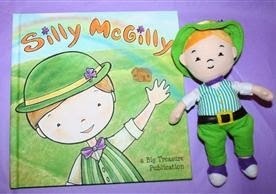
I plan to sit Silly McGilly by our window and then my younger kids can write (or narrate) letters to him and keep a scrapbook of the funny tricks he plays on them.

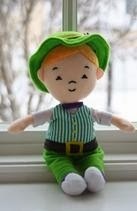
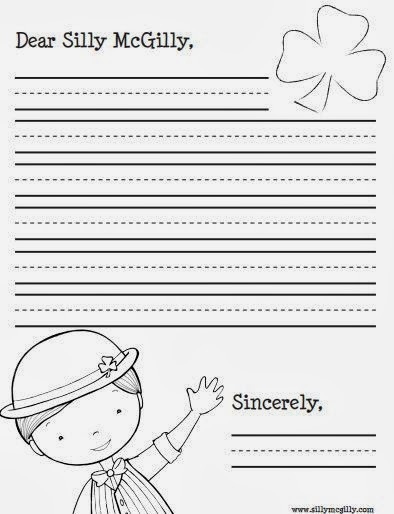
On March 17th, we like to begin our morning with reading the classic Dr. Seuss book, Green Eggs and Ham. Afterwards, we eat green eggs and ham. ☺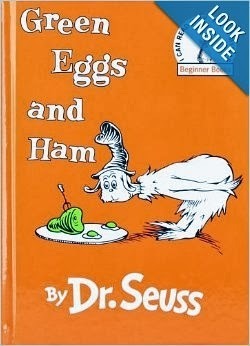
My four and five-year-olds really like using bingo markers. CLICK HERE to print off some copies for your wee little ones.
My former students and my own children have enjoyed graphing Lucky Charms for as long as I can remember. This is a classic activity every year. (My middle-schoolers still join in on the fun with their younger siblings.) Tip: Before you open the box, ask your child which type he/she thinks will be the most popular type of marshmallow. This is a terrific way to practice making predictions, as well as practicing graphing skills. CLICK HERE to print off a copy.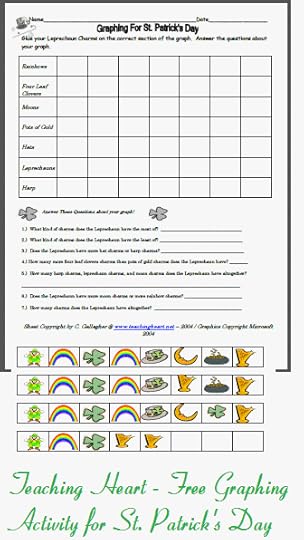
For a fun science activity, we like to do a Color Changing Milk Experiment. CLICK HERE for instructions. Tip: It does not work with the foam dishwashing soap.
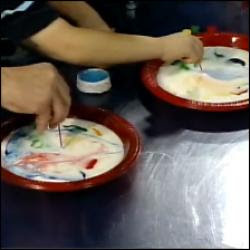
HERE are TONS of free St. Patrick's Day printables, such as: games, mazes, handwriting, practicing math skills, art ideas and much more!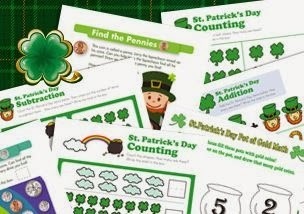
My sweet blogging friend, Shannon, has found lots of online learning activities for St. Patrick's Day.
She linked them all to one easy-to-use website . So cool!
Even though I like doing fun activities for this holiday, I read The Story of St. Patrick to my older children. With all the not-so-family-friendly ways that people in the U.S. celebrate St. Patrick's Day, I want my kids to understand why the holiday originated and how amazing this heroic person really was.
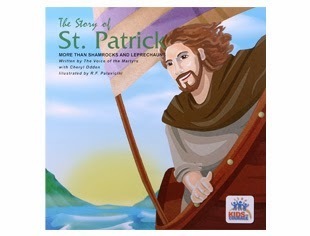
I'd like to leave you with this Irish blessing. ♥
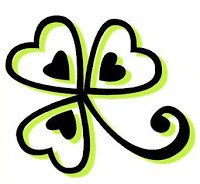 May the road rise to meet you.May the wind be always at your back.May the sun shine warm upon your face,The rains fall soft upon your fields.And until we meet again,May God hold you in the palm of his hand.
May the road rise to meet you.May the wind be always at your back.May the sun shine warm upon your face,The rains fall soft upon your fields.And until we meet again,May God hold you in the palm of his hand.
Wishing you a happy St. Patrick's Day!
For more St. Patrick's Day activities, click HERE and then SCROLL DOWN to see all the posts.



Silly McGilly visits our house on St. Patrick's Day and he loves to play tricks on little ones, such as: hiding toys, turning things upside down, changing toilet water green, and leaving cabinet doors open (oh wait, that's my 21 year-old son!)

I plan to sit Silly McGilly by our window and then my younger kids can write (or narrate) letters to him and keep a scrapbook of the funny tricks he plays on them.



On March 17th, we like to begin our morning with reading the classic Dr. Seuss book, Green Eggs and Ham. Afterwards, we eat green eggs and ham. ☺

My four and five-year-olds really like using bingo markers. CLICK HERE to print off some copies for your wee little ones.

My former students and my own children have enjoyed graphing Lucky Charms for as long as I can remember. This is a classic activity every year. (My middle-schoolers still join in on the fun with their younger siblings.) Tip: Before you open the box, ask your child which type he/she thinks will be the most popular type of marshmallow. This is a terrific way to practice making predictions, as well as practicing graphing skills. CLICK HERE to print off a copy.

For a fun science activity, we like to do a Color Changing Milk Experiment. CLICK HERE for instructions. Tip: It does not work with the foam dishwashing soap.

HERE are TONS of free St. Patrick's Day printables, such as: games, mazes, handwriting, practicing math skills, art ideas and much more!

My sweet blogging friend, Shannon, has found lots of online learning activities for St. Patrick's Day.

She linked them all to one easy-to-use website . So cool!

Even though I like doing fun activities for this holiday, I read The Story of St. Patrick to my older children. With all the not-so-family-friendly ways that people in the U.S. celebrate St. Patrick's Day, I want my kids to understand why the holiday originated and how amazing this heroic person really was.

I'd like to leave you with this Irish blessing. ♥
 May the road rise to meet you.May the wind be always at your back.May the sun shine warm upon your face,The rains fall soft upon your fields.And until we meet again,May God hold you in the palm of his hand.
May the road rise to meet you.May the wind be always at your back.May the sun shine warm upon your face,The rains fall soft upon your fields.And until we meet again,May God hold you in the palm of his hand.Wishing you a happy St. Patrick's Day!

For more St. Patrick's Day activities, click HERE and then SCROLL DOWN to see all the posts.

Published on March 14, 2015 09:09
February 12, 2015
FUN Learning Activities with Chocolate
In preparation for Valentine's Day, my kids are diving into chocolate lessons head first with their mouths wide open. There is something magical when you mix food with learning, and chocolate seems to be the best teaching tool I have found so far!

No worries if Valentine's Day has already passed when you find this post. Chocolate can been incorporated into many other lessons, such as when learning about rain forests or to celebrate Chocolate Week in March. Yes, there is such a week! My family occasionally declares a Chocolate Day to spice things up when our lessons (or myself) may need a new pep in my step.

I was so into the chocolate unit study this week that I was sporting my Teacher Powered by Chocolate T-shirt this week!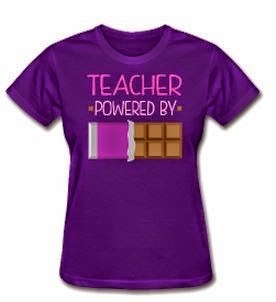
So how do we incorporate chocolate into our lessons?
When my kids are little, we use chocolate syrup to fingerpaint letters, shapes, numbers, and spelling words. Just squirt same chocolate syrup on fingerpaint paper and let your kids play.
This photo and fingerpainting with chocolate post is a blast from the past (perhaps 7 years old).
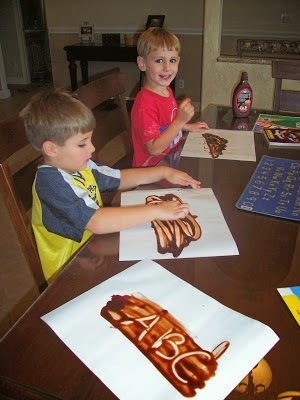
For a variation, squirt some chocolate syrup into a small baggie, seal it tight, and let your kids write with their fingers on the side of the baggie for a sensory activity.
For some writing activities with chocolate, we wrote a Five Senses Poem on chocolate using this lesson plan. What a great writing activity that was!
My blogging friend, Jennifer, has a cute sensory poem template to use with the above poetry lesson for young children.
 Source: rowdyinfirstgradeWe wrote
step-by-step directions
on how to make hot chocolate and then made it exactly according to their instructions. (You'd be surprised how kids can miss out on important steps.)
Source: rowdyinfirstgradeWe wrote
step-by-step directions
on how to make hot chocolate and then made it exactly according to their instructions. (You'd be surprised how kids can miss out on important steps.)
 Source: Teachers Notebook
This teacher
had her student create this chocolate acrostic poem. I was impressed by her creativity and descriptive wording to describe chocolate.
Source: Teachers Notebook
This teacher
had her student create this chocolate acrostic poem. I was impressed by her creativity and descriptive wording to describe chocolate.
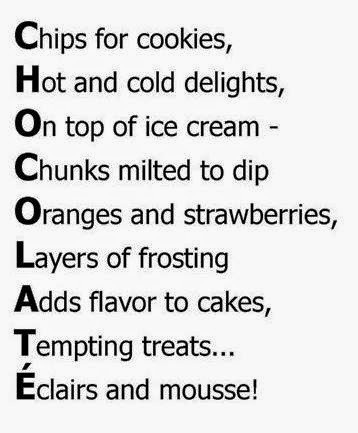 Source: www.brighthubeducation.com
Source: www.brighthubeducation.com
We read books about Milton Hershey.
Milton Hershey: More than Chocolate (Heroes of History)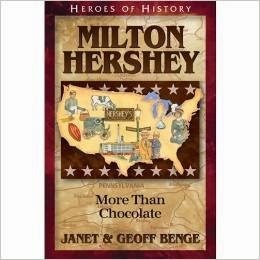
Who was Milton Hershey?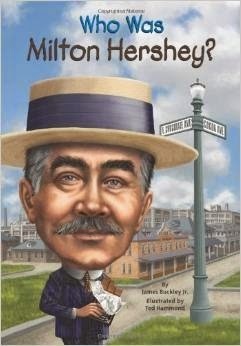
Hershey's site offers lots of free lesson plans and activities.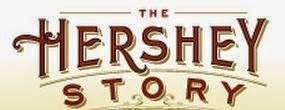
We used Hershey bars and kisses for addition, subtraction, multiplication, division, and fractions. We picked these books up from our local library. Trust me, your kids will not forget these math lessons!
Hershey's Fractions Book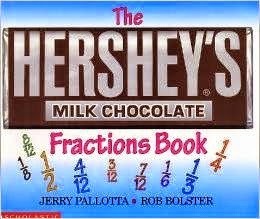
Hershey's Multiplication Book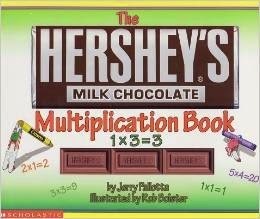
Hershey's Addition Book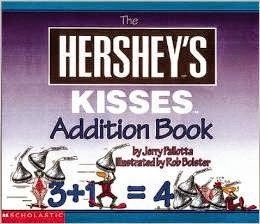
Hershey's Subtraction Book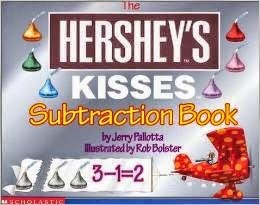
My little ones LOVE using M &M's for math manipulatives as well as graphing. I had to purchase this book (even though it is at my local library) because my kids want to read it at least once a month. I don't blame them a bit- it is pure fun!
The M&M's Counting Book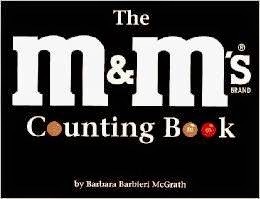
More M&M's Math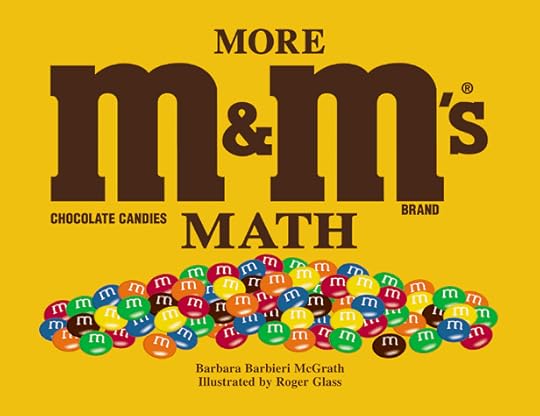
Some chocolate-filled fiction books are:
Chocolate Fever (A classic that I absolutely enjoy reading aloud to my kids.)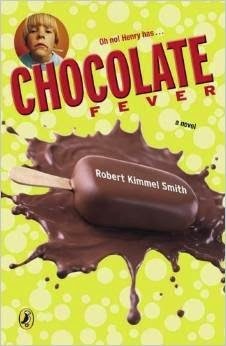
The Chocolate Touch (I haven't read this book yet but it is on my list.)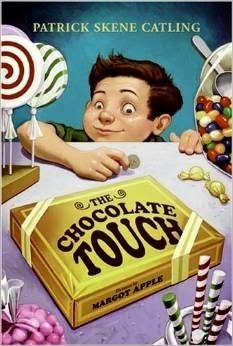
Charlie and the Chocolate Factory (Kids are mesmerized by this read-aloud. My former students were begging for more. That is why Roald Dahl is known as the world's number one storyteller.)
My husband prefers watching the movie Willy Wonka and the Chocolate Factory as it was his favorite movie growing up (but I still prefer the book).
Roald Dahl's Site has tons of Charlie and the Chocolate Factory lesson plans and quizzes.
We read about the history of chocolate in Smart about Chocolate- A Sweet History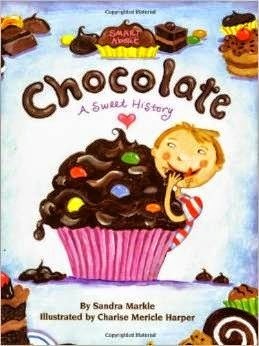
The Story of Chocolate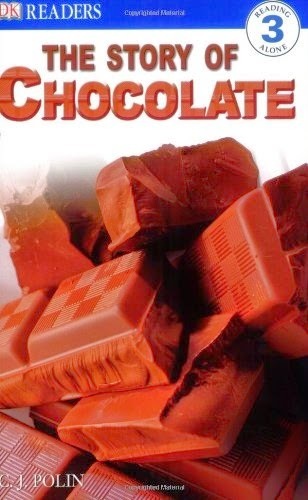
We watch some videos about the story of chocolate and how it is made .
This is the best chocolate unit study I have used and it is FREE. You have to print off a copy for yourself. So much good stuff!
Teaching Ideas offers several fantastic chocolate activities.
My favorite activity from Teaching Tips was their chocolate fact cards.
My little ones played chocolate games on the computer that had them matching shapes. It was also great practice for them using the mouse on the computer.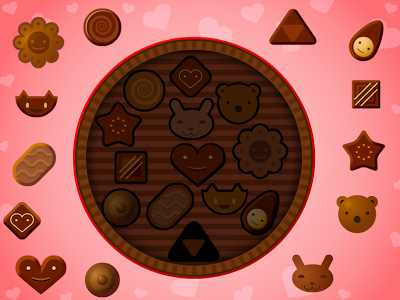
Make Your Own Chocolate Kit I have not tried out this kit but have read such great reviews about it on homeschool blogs that I have it on my Amazon wish list for a future gift for my kids. (Yes, I am one of "those moms" who likes to give educational gifts. My kids don't seem to mind a bit.) We ended our chocolate study with some science by watching liquids turns to solids in seconds right before our eyes by making chocolate covered strawberries as well as homemade magic shell poured on ice cream. If you haven't tried
this easy magic shell recipe
, you have to make it. I even bottled it up in mason jars one year for Christmas gifts because it was so delicious!
We ended our chocolate study with some science by watching liquids turns to solids in seconds right before our eyes by making chocolate covered strawberries as well as homemade magic shell poured on ice cream. If you haven't tried
this easy magic shell recipe
, you have to make it. I even bottled it up in mason jars one year for Christmas gifts because it was so delicious!
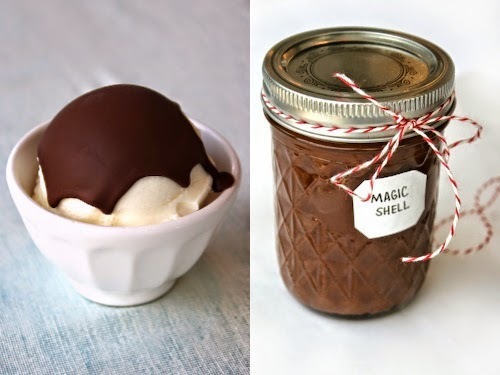
Lessons with chocolate ensure sweet learning success- from geography to history to science to math to writing to spelling to reading. Unit studies can involve every subject area and the entire family, including myself! (Someone has to taste test the chocolate to make sure it is safe to eat, right?)
Have FUN making sweet memories with your kids,
To read more of my posts on FUN Valentine's Day activities,
click on the image below and keep scrolling down .
For more ways to incorporate food into math lessons, click here .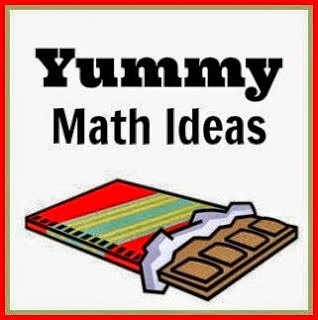



No worries if Valentine's Day has already passed when you find this post. Chocolate can been incorporated into many other lessons, such as when learning about rain forests or to celebrate Chocolate Week in March. Yes, there is such a week! My family occasionally declares a Chocolate Day to spice things up when our lessons (or myself) may need a new pep in my step.

I was so into the chocolate unit study this week that I was sporting my Teacher Powered by Chocolate T-shirt this week!

So how do we incorporate chocolate into our lessons?
When my kids are little, we use chocolate syrup to fingerpaint letters, shapes, numbers, and spelling words. Just squirt same chocolate syrup on fingerpaint paper and let your kids play.
This photo and fingerpainting with chocolate post is a blast from the past (perhaps 7 years old).

For a variation, squirt some chocolate syrup into a small baggie, seal it tight, and let your kids write with their fingers on the side of the baggie for a sensory activity.
For some writing activities with chocolate, we wrote a Five Senses Poem on chocolate using this lesson plan. What a great writing activity that was!
My blogging friend, Jennifer, has a cute sensory poem template to use with the above poetry lesson for young children.
 Source: rowdyinfirstgradeWe wrote
step-by-step directions
on how to make hot chocolate and then made it exactly according to their instructions. (You'd be surprised how kids can miss out on important steps.)
Source: rowdyinfirstgradeWe wrote
step-by-step directions
on how to make hot chocolate and then made it exactly according to their instructions. (You'd be surprised how kids can miss out on important steps.) Source: Teachers Notebook
This teacher
had her student create this chocolate acrostic poem. I was impressed by her creativity and descriptive wording to describe chocolate.
Source: Teachers Notebook
This teacher
had her student create this chocolate acrostic poem. I was impressed by her creativity and descriptive wording to describe chocolate.
 Source: www.brighthubeducation.com
Source: www.brighthubeducation.comWe read books about Milton Hershey.
Milton Hershey: More than Chocolate (Heroes of History)

Who was Milton Hershey?

Hershey's site offers lots of free lesson plans and activities.

We used Hershey bars and kisses for addition, subtraction, multiplication, division, and fractions. We picked these books up from our local library. Trust me, your kids will not forget these math lessons!
Hershey's Fractions Book

Hershey's Multiplication Book

Hershey's Addition Book

Hershey's Subtraction Book

My little ones LOVE using M &M's for math manipulatives as well as graphing. I had to purchase this book (even though it is at my local library) because my kids want to read it at least once a month. I don't blame them a bit- it is pure fun!
The M&M's Counting Book

More M&M's Math

Some chocolate-filled fiction books are:
Chocolate Fever (A classic that I absolutely enjoy reading aloud to my kids.)

The Chocolate Touch (I haven't read this book yet but it is on my list.)

Charlie and the Chocolate Factory (Kids are mesmerized by this read-aloud. My former students were begging for more. That is why Roald Dahl is known as the world's number one storyteller.)

My husband prefers watching the movie Willy Wonka and the Chocolate Factory as it was his favorite movie growing up (but I still prefer the book).

Roald Dahl's Site has tons of Charlie and the Chocolate Factory lesson plans and quizzes.

We read about the history of chocolate in Smart about Chocolate- A Sweet History

The Story of Chocolate

We watch some videos about the story of chocolate and how it is made .
This is the best chocolate unit study I have used and it is FREE. You have to print off a copy for yourself. So much good stuff!

Teaching Ideas offers several fantastic chocolate activities.

My favorite activity from Teaching Tips was their chocolate fact cards.

My little ones played chocolate games on the computer that had them matching shapes. It was also great practice for them using the mouse on the computer.

Make Your Own Chocolate Kit I have not tried out this kit but have read such great reviews about it on homeschool blogs that I have it on my Amazon wish list for a future gift for my kids. (Yes, I am one of "those moms" who likes to give educational gifts. My kids don't seem to mind a bit.)
 We ended our chocolate study with some science by watching liquids turns to solids in seconds right before our eyes by making chocolate covered strawberries as well as homemade magic shell poured on ice cream. If you haven't tried
this easy magic shell recipe
, you have to make it. I even bottled it up in mason jars one year for Christmas gifts because it was so delicious!
We ended our chocolate study with some science by watching liquids turns to solids in seconds right before our eyes by making chocolate covered strawberries as well as homemade magic shell poured on ice cream. If you haven't tried
this easy magic shell recipe
, you have to make it. I even bottled it up in mason jars one year for Christmas gifts because it was so delicious!

Lessons with chocolate ensure sweet learning success- from geography to history to science to math to writing to spelling to reading. Unit studies can involve every subject area and the entire family, including myself! (Someone has to taste test the chocolate to make sure it is safe to eat, right?)
Have FUN making sweet memories with your kids,

To read more of my posts on FUN Valentine's Day activities,
click on the image below and keep scrolling down .

For more ways to incorporate food into math lessons, click here .


Published on February 12, 2015 11:17
January 8, 2015
FUN Ways to Teach American History

This school year my kids have been diving into American history and loving it! I enjoy learning alongside of my middle school boys in this subject area since there is so many fascinating things in history to discover. This famous quote by Theodore Roosevelt sums up how I feel about why history is so incredibly important to learn.

History was my least favorite subject when I was growing up. I did not like it one bit. Most of my teachers strictly used a textbook and did not add any excitement to this subject whatsoever. Even though I aced the tests, I graduated college with little "real" knowledge of history and certainly no passion for this subject area until....
I became a fourth grade teacher. I deviated from just using a textbook as much as my public school would allow me to. We watched superb history videos, acted out scenes from history, created art projects that tied into themes we were learning about, cooked recipes that were used during that time, and incorporated writing lessons to make history exciting to learn about. When I began homeschooling, I learned about more phenomenal resources and creative ways to teach history. Now my family and I LOVE learning about history.
Please note: This will be a post in progress as I will be adding resources to it throughout the school year. I recommend pinning and/or bookmarking this post so you can check back and see the final list of recommended resources. Also, this post is not just for school teachers and home educators but for ALL parents who would like to instill a love of learning history in their children.Before we begin studying history in depth: My children first learn about geography. HERE are plenty of ideas to teach geography to your child. I feel this subject area needs to be taught first, so kids can relate to where the events in history are taking place.
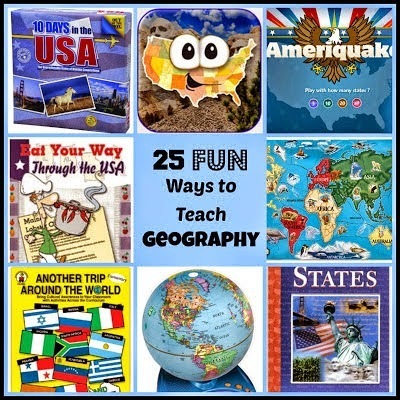
Teaching Tip: I'd like to share an excellent visual that a college professor shared with me 24 years ago. (Typing that sentence just made me feel old.) Imagine a file folder cabinet that is filled with multiple files on different topics. That is your brain filled with many topics. The information in your brain's files is your "schema" or background knowledge about a topic. Everyone’s schema for a topic is different, depending on your individual experiences on what you have learned about a topic.
Our job as parents and educators is to first create a file folder. (Introduce a topic.) Next, we begin to fill that file folder. (Teach about the topic.) That file folder will be closed and reopened to fill over and over. (We can teach, move on, and revisit that topic again in the future.)
This is how learning becomes mastered. When our children are little, we introduce them to many topics and then continue to reteach those topics more in depth as they grow. We can also interweave these topics into their daily lives to make them more meaningful and concrete.
I like to reference the file cabinet example particularly for teaching history since so much of understanding history is based on the knowledge of events that happened beforehand. It is also a great reminder that children will not grasp everything on history the first time or two that it is taught, but their history file folder will still continue to be filled each time you reopen it. In fact, I am still filling my history file and hope to keep doing so all of my life!
Budget Tips: Many of the resources listed below can be found in your local library. You can also watch several of the episodes on television. In the past, I have split larger purchases with other homeschool families and we have shared them.
And now onto the list of AWESOME resources that make learning history FUN!
{If you have history resources that you have used and highly recommend, please share them in the comments below.}

I love using DVDs and television programs to teach history. Just think of how kids can easily recite lines and describe scenes in detail from everyday programs they watch on TV. Why not use that form of media to teach history? Not only will kids have fun watching the programs, they will also be learning a whole lot.
TIP: Many of the programs listed below have study guides included on the DVDs or on their websites. Make sure to check those out, too.

Liberty Kids This television series is a perfect way to introduce young children to history. My middle schoolers still like watching these shows with their younger siblings. The character voices are provided by award-winning film legends, such as: Walter Croncrite, Annette Bening, Dustin Hoffman, Michael Douglas, Arnold Schwarzenegger, Sylvester Stallone, Whoopi Goldberg, Billy Crystal, Ben Stiller and Liam Neeson. I purchased the entire series for $5.00 (and with free shipping) on Amazon!!! And that is not a typo- 866 minutes worth for five bucks! Now my family watches them in our van while traveling. Loving it!

Drive Thru History is my all-time favorite history curriculum for homeschooling. So much history is packed into these episodes that can be watched again and again. They are incredible entertaining with lots of action and even humor sprinkled throughout. This video series is definitely my kids' top pick!
 Drive Thru History: American History Series
Dave Stotts, the driver and host of the show, explores the rich history of Americain a fast and fun style all of his own.
Drive Thru History: American History Series
Dave Stotts, the driver and host of the show, explores the rich history of Americain a fast and fun style all of his own.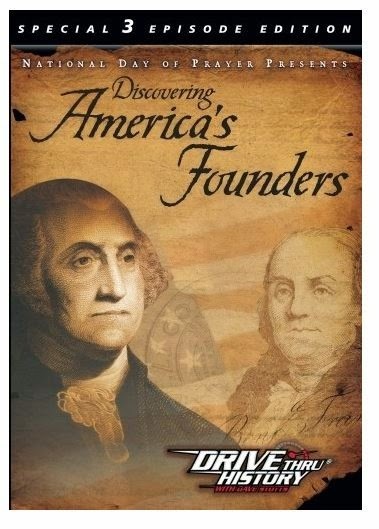 Discovering America's Founders
Discover how faith and commitment to God and our country contributed to the founding of our nation.
Discovering America's Founders
Discover how faith and commitment to God and our country contributed to the founding of our nation.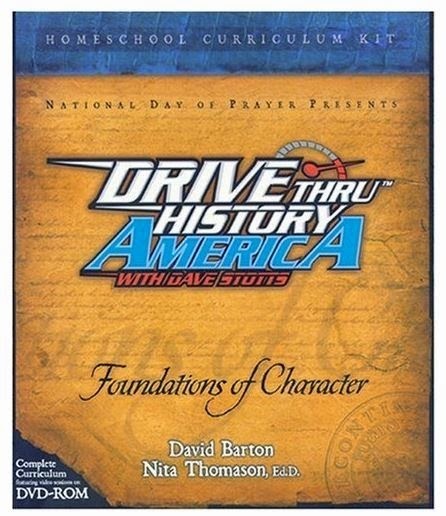
Foundations of Character This curriculum shares how the Founding Fathers' beliefs guided their actions.

America: The Story of US This series includes 720 minutes of how America was made. Outstanding cinematography by the History Channel- talk about making history come to life before your eyes!
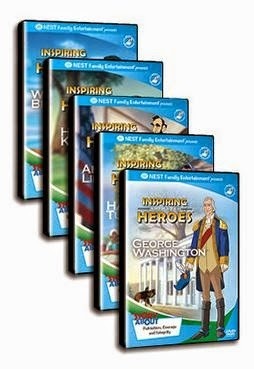 Inspiring Heroes by Nest Family
I really like how this series shows a Biblical side that many other video series will leave out. We watch them as a family.
Inspiring Heroes by Nest Family
I really like how this series shows a Biblical side that many other video series will leave out. We watch them as a family.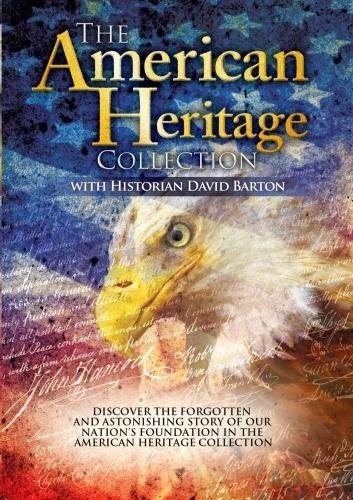
The American Heritage Collection Discover the fascinating truth of America's past by exploring the Bible's influence on American culture from government to education. Become an eyewitness to the nation's Christian heritage with an exclusive tour of the U.S. capitol, and enjoy the rich history of faith in the founding era.
TIP: There are many other excellent programs on PBS and The History Channel.

There are countless picture and chapter books that I use with my children. For the sake of not having a blog post that would continue infinitely, I listed my favorite series and a few of my top picks.
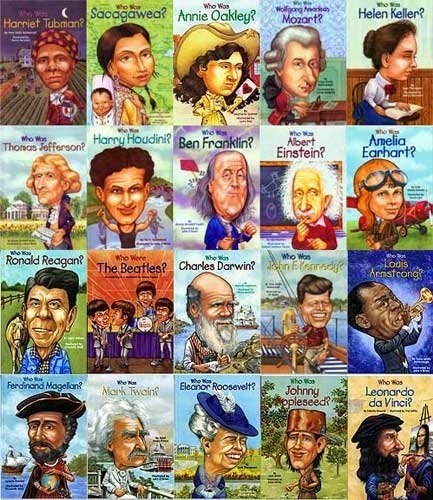
Who Was and Who Is SeriesThese easy-to-read chapter books provide quick glimpses into important American's lives. Kids enjoy the funny illustrations and the interesting facts.

History of US by Joy HakimThis highly-acclaimed book series has even spun off into several television programs.

You Choose: History Series These books remind me of the choose-your-own-adventure books that were popular when I was a child. The reader is actually submerged into the setting. Kids love these and so do I!
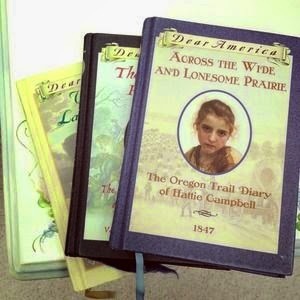
Dear America and

Getting to Know the US Presidents SeriesThese books are a quick read and provide an overview of each president's life. Great for short introductions to each president.
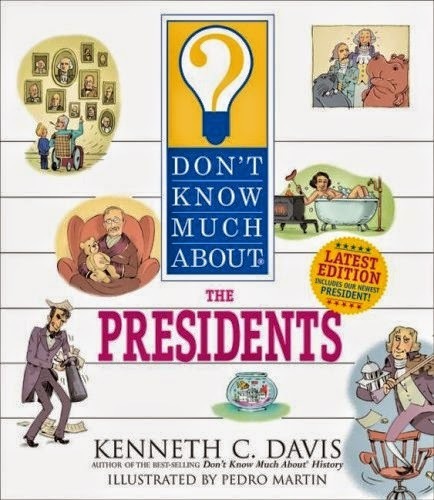
Don't Know Much About the PresidentsThis book has FUN written all over it (and inside of it!) It is filled with trivia and silly facts about our presidents that kids simply find fascinating.
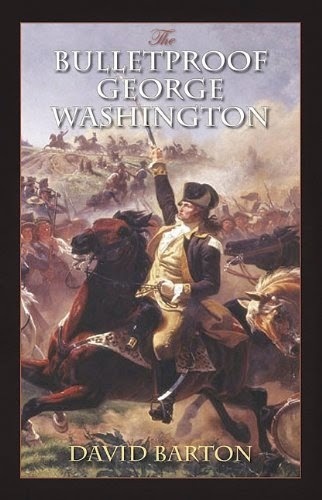
The Bulletproof George WashingtonA great read for older children. Colonial George Washington's perilous experiences in the French and Indian War are chronicled in this riveting account of God's providence and protection. There is something intriguing when learning about miracles, which also leads me to the next book.

Miracles in American HistoryDiscover desperate circumstances in America's past and how men and women rose up with faith and courage and situations unexplainably turned around. (I recently ordered this book and can't wait to read it.)

Exploring the ConstitutionThis book takes the reader on a detailed exposition through the Declaration of Independence and Constitution. My homeschool group used this book as a study guide as they dove into learning together about our nation's founding documents. The older students really enjoyed this study group.
 Kids Discover MagazinesI have used these magazines for 15 years as supplements to units. They are filled with outstanding photography and facts. Kids also like the magazine feel of them, which provides a nice change to a standard book. I pick and choose the topics my kids are interested in or currently studying.
Kids Discover MagazinesI have used these magazines for 15 years as supplements to units. They are filled with outstanding photography and facts. Kids also like the magazine feel of them, which provides a nice change to a standard book. I pick and choose the topics my kids are interested in or currently studying.
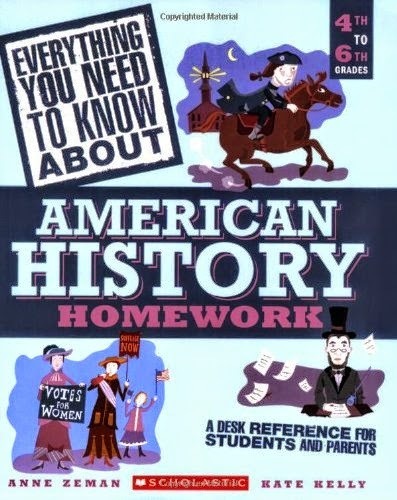
Everything You Need to Know About American HistoryThis is my go-to for any history events that I need a refresher on. I also use certain sections for quick read-alouds and as a springboard for writing assignments.
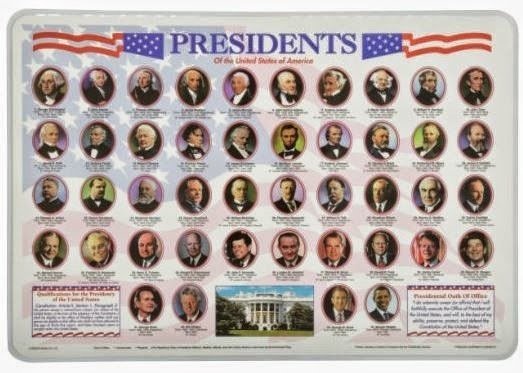
Presidents Learning PlacematThis is the reference tool my children refer to often while learning the order of the presidents.
{Visit this post for more FUN ways to learn about presidents.}
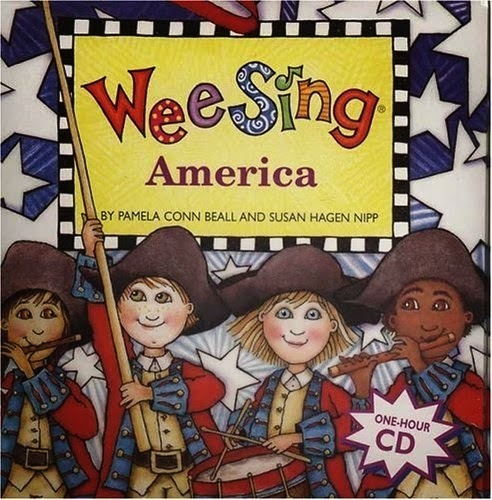
Wee Sing AmericaWhat an excellent collection of patriotic songs! I even have it downloaded on my phone to play when my little ones are coloring.
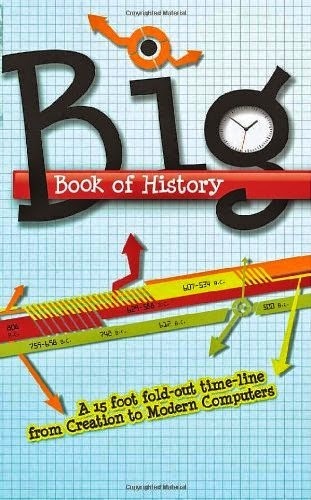
Big Book of HistoryHow can you unfold FUN? Every child should have a timeline while learning history and why not give them one like no other- a 15 foot fold-out timeline! I saw this at a homeschool convention and knew right away that I had to purchase it. This is a unique tool to engage your child in an adventurous trip through time - from the first day of creation to present day.
MORE TO COME SOON
I will be adding much more to this list. (My allocated blogging time for today is used up as my family is mentioning.) Make sure to bookmark or pin this post to check back for updates, and remember to share your favorite resources in the comments below.
Enjoy making American history FUN!


Published on January 08, 2015 17:00
December 20, 2014
Making Poetry FUN
Poetry can be so much FUN! My kids and I enjoy reading poetry, and we recently dove into a poetry unit, which included learning more about figurative language and various types of poems.Many picture books use lots of poetry so most children are already familiar with the basic couplets and quatrains and the simple AABB or ABAB patterns. I wanted to further stretch my children's knowledge of poetry and show them different styles of poetry, so I first brought out my favorite
poetry books by Shel Silverstein
from when I was a child. What a wonderful blast from the past!
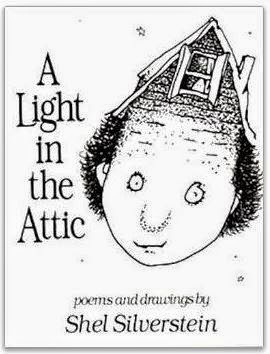
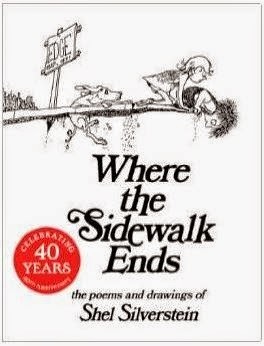
I also enjoyed using poetry books by Jack Prelutsky when I taught elementary school.
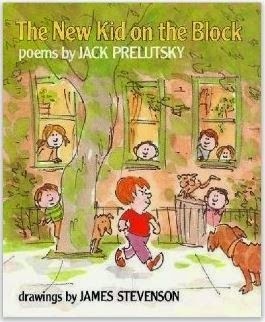
Here are a couple of my favorite poetry collections. The Big Book of Poetry is a good assortment of all styles and For Laughing Out Loud is just plain FUNNY!
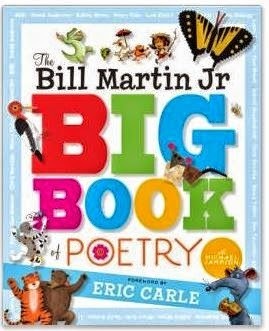
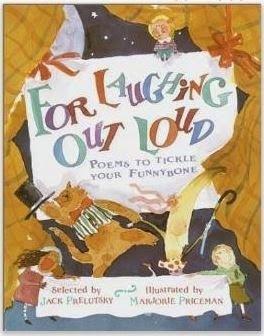
I couldn't forget the classic poems, such as Mother Goose .
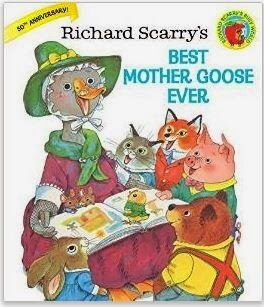
My kids and I took turns reading the books mentioned above, but it is refreshing to hear a different voice reading poems. This is one of the highest rated poetry books on CD that kids really enjoy.
 After reading lots of poetry books, I had my sons choose two of their favorites to memorize and then recite them in front of our family. I did this as a child and still remember the poem I recited in fourth grade. Good times!"Spaghetti, spaghetti, all over the place. Up to my elbows, up to my face......."Anyone else remember memorizing poems?To get their creative juices flowing, we began with making shape poems. Kids can spend days just creating different free verse poems or simple couplets using
this site
.
After reading lots of poetry books, I had my sons choose two of their favorites to memorize and then recite them in front of our family. I did this as a child and still remember the poem I recited in fourth grade. Good times!"Spaghetti, spaghetti, all over the place. Up to my elbows, up to my face......."Anyone else remember memorizing poems?To get their creative juices flowing, we began with making shape poems. Kids can spend days just creating different free verse poems or simple couplets using
this site
.

Here is one of Colton's poems.
 I read aloud
Words, Wit, and Wonder
to my kids to help learn the fundamental tools of writing poems. It is written on a simplistic level that children can really understand.
I read aloud
Words, Wit, and Wonder
to my kids to help learn the fundamental tools of writing poems. It is written on a simplistic level that children can really understand.
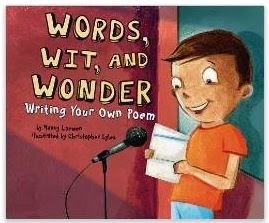
Next, we reviewed figurative language so my boys can relate to why the poets use it in their writing. I HIGHLY recommend purchasing Poetry: A Step By Step guide to Writing Great Poems for the mid-upper elementary grades. I adapted it for my sixth and seventh graders and it was simply awesome!!!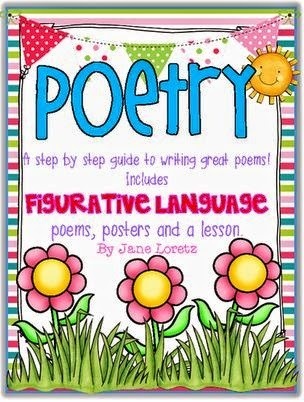 My kids had matched the words and phrases to the correct type of figurative language. This was a terrific review activity to our study of figurative language last school year.
My kids had matched the words and phrases to the correct type of figurative language. This was a terrific review activity to our study of figurative language last school year.

Now it was time to use our knowledge of poetry and begin writing poems. I reminded my boys that they are creating their own books that they can keep forever- something they will share with their younger siblings for years and even with their own children when they are older. Using this approach completely changes their perception towards their assignments, and they try to do their very best. They are not just completing assignments, they are creating masterpieces that will be treasured by others for many years.
Here are some examples of their poems.

Enjoy having FUN with poetry!




I also enjoyed using poetry books by Jack Prelutsky when I taught elementary school.

Here are a couple of my favorite poetry collections. The Big Book of Poetry is a good assortment of all styles and For Laughing Out Loud is just plain FUNNY!


I couldn't forget the classic poems, such as Mother Goose .

My kids and I took turns reading the books mentioned above, but it is refreshing to hear a different voice reading poems. This is one of the highest rated poetry books on CD that kids really enjoy.
 After reading lots of poetry books, I had my sons choose two of their favorites to memorize and then recite them in front of our family. I did this as a child and still remember the poem I recited in fourth grade. Good times!"Spaghetti, spaghetti, all over the place. Up to my elbows, up to my face......."Anyone else remember memorizing poems?To get their creative juices flowing, we began with making shape poems. Kids can spend days just creating different free verse poems or simple couplets using
this site
.
After reading lots of poetry books, I had my sons choose two of their favorites to memorize and then recite them in front of our family. I did this as a child and still remember the poem I recited in fourth grade. Good times!"Spaghetti, spaghetti, all over the place. Up to my elbows, up to my face......."Anyone else remember memorizing poems?To get their creative juices flowing, we began with making shape poems. Kids can spend days just creating different free verse poems or simple couplets using
this site
.

Here is one of Colton's poems.
 I read aloud
Words, Wit, and Wonder
to my kids to help learn the fundamental tools of writing poems. It is written on a simplistic level that children can really understand.
I read aloud
Words, Wit, and Wonder
to my kids to help learn the fundamental tools of writing poems. It is written on a simplistic level that children can really understand.

Next, we reviewed figurative language so my boys can relate to why the poets use it in their writing. I HIGHLY recommend purchasing Poetry: A Step By Step guide to Writing Great Poems for the mid-upper elementary grades. I adapted it for my sixth and seventh graders and it was simply awesome!!!
 My kids had matched the words and phrases to the correct type of figurative language. This was a terrific review activity to our study of figurative language last school year.
My kids had matched the words and phrases to the correct type of figurative language. This was a terrific review activity to our study of figurative language last school year.
Now it was time to use our knowledge of poetry and begin writing poems. I reminded my boys that they are creating their own books that they can keep forever- something they will share with their younger siblings for years and even with their own children when they are older. Using this approach completely changes their perception towards their assignments, and they try to do their very best. They are not just completing assignments, they are creating masterpieces that will be treasured by others for many years.

Here are some examples of their poems.

Enjoy having FUN with poetry!


Published on December 20, 2014 11:34
December 11, 2014
Grab some FREE Ebooks for yourself, friends, and family!
Hurry and grab some Ebooks for yourself and also gift them to friends and family without leaving your home and no money out of your pocket- Christmas shopping really can't get any better than this!
My blogging friend Shannon Long from Technology Rocks shared this post on how you can give an Ebook when it's on sale or free to anyone with an email account? Yes, I am for real!
{And you don't have to own a Kindle- you can download Kindle books to iPhones, Androids, iPads, Macs and Pc's! }
But it even gets better folks...Amazon will let you select when the Ebook will be gifted, which means you can purchase books on sale or that have gone FREEnow and then give them for Christmas! Is that not totally cool?

So to celebrate the holidays, I am offering 3 FREE homeschool Ebooks valued at $27.85!
Grace for the Homeschool Mom How to Teach Your Child: Simple Tools for Homeschool Moms Simplify Your Homeschool Day: Shorten Your Day, Sweeten YourTime
You can grab them for yourself or gift them to friends and family. This deal will only be effective from Dec 12- 16 so quickly make your list and check it twice and knock out some Christmas shopping while treating yourself, too.
Make sure to follow Shannon's simple instructions on how to gift a book, so they will not even know that you got them for free- WOW!
Enjoy!


Published on December 11, 2014 15:06
December 10, 2014
Using Strengths to Guide Your Teaching
I heard an encouraging story today while attending
Community Bible Study
. It reminds me of how parents naturally want their children to excel in every area of academics and extra-curricular activities, but the reality is- God made each child differently for His purpose. He never intended for our children to excel in everything.
 A Duck, Rabbit, Squirrel and an Eaglefrom Charles Swindoll's "Insight For Living"
A Duck, Rabbit, Squirrel and an Eaglefrom Charles Swindoll's "Insight For Living"
Relax. Cultivate your children's capabilities. Maximize their strengths. Do not handicap their unique skills by spending too much time on making them average in everything. Help them create their own style, and appreciate your children for who God created them to be. Now back to the story-


 A Duck, Rabbit, Squirrel and an Eaglefrom Charles Swindoll's "Insight For Living"
A Duck, Rabbit, Squirrel and an Eaglefrom Charles Swindoll's "Insight For Living""Once upon a time, the animals decided they should do something meaningful to meet the problems of the new world. So they organized a school.
They adopted an activity curriculum of running, climbing, swimming and flying. To make it easier to administer the curriculum, all the animals took all the subjects.
The duck was excellent at swimming; in fact, better than his instructor. But he made only passing grades in flying, and was very poor at running. Since he was slow in running, he had to drop swimming and stay after school to practice running. This caused his web feet to be badly worn, so that he was only average in swimming. But average was quite acceptable so nobody worried about that--except the duck.
The rabbit started at the top of his class in running, but developed a nervous twitch in his leg muscles because of so much make-up work in swimming.
The squirrel was excellent in climbing, but he encountered constant frustration in flying class because his teacher made him start from the ground up instead of from the treetop down. He developed "charlie horses" from overexertion, and so only got a C in climbing and a D in running.
The eagle was a problem child and was severely disciplined for being a non-conformist. In climbing, he beat all the others to the top of the tree, but insisted on using his way to get there.
A duck is a duck--and only a duck. It is built to swim, not to run or fly and certainly not to climb. A squirrel is a squirrel--and only that. To move it out of its forte, climbing, and then expect it to swim or fly will drive a squirrel nuts. (insert giggle from me) Eagles are beautiful creatures in the air but not in a foot race. The rabbit will win every time unless, of course, the eagle gets hungry.
What is true of creatures in the forest is true of Christians in the family; both the family of believers and the family under your roof. God has not made us all the same. He never intended to. It was He who planned and designed the differences, unique capabilities, and variations.
If God made you a duck--you're a duck, friend. Swim like mad, but don't get bent out of shape because you wobble when you run or flap instead of fly. Furthermore, if you're an eagle, stop expecting squirrels to soar, or rabbits to build the same kind of nests you do."What is the message of the story?
Relax. Cultivate your children's capabilities. Maximize their strengths. Do not handicap their unique skills by spending too much time on making them average in everything. Help them create their own style, and appreciate your children for who God created them to be. Now back to the story-
"Rabbits don't fly. Eagles don't swim. Ducks look funny trying to climb. Squirrels don't have feathers. Stop comparing. There's plenty of room in the forest."


Published on December 10, 2014 17:33
December 3, 2014
Welcome to Teaching with TLC
Teaching with TLC began as an educational outreach in 2006 to help encourage parents and educators. I'm a mom of five and an educator who enjoys sharing creative and practical teaching tips. Actually, I'm a bit obsessed with making learning FUN! Here's how you can get started:
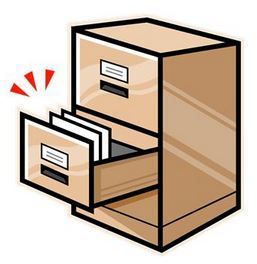 Want to find out the latest tips? Head on over to my recent posts by scrolling down.Would you like more teaching tips? Check out my resources for printables, E-books, workshops, and books.Don't want to miss out on future tips? Subscribe to my email. Looking for teaching tips in a particular subject area or perhaps for a holiday? Visit my Virtual File Cabinet below for hundreds of creative and practical ideas.Enjoy making learning FUN!
Want to find out the latest tips? Head on over to my recent posts by scrolling down.Would you like more teaching tips? Check out my resources for printables, E-books, workshops, and books.Don't want to miss out on future tips? Subscribe to my email. Looking for teaching tips in a particular subject area or perhaps for a holiday? Visit my Virtual File Cabinet below for hundreds of creative and practical ideas.Enjoy making learning FUN!

art back-to-school Bible blogging Chinese New Year Christmas classroom fire safety Earth Day Easter encouragement end of school year fall family Father's Day finances Flag Day Fourth of July games geography Halloween handwriting health homeschooling homework help humor math Mom Squad Mother's Day music New Year's President's Day reading recipes rewards science spelling Spring St. Patrick's Day summer conferences technology testing Thanksgiving Transform Study tutoring Valentine's winter workshops writing 100th Day Freebies

[image error]
 Want to find out the latest tips? Head on over to my recent posts by scrolling down.Would you like more teaching tips? Check out my resources for printables, E-books, workshops, and books.Don't want to miss out on future tips? Subscribe to my email. Looking for teaching tips in a particular subject area or perhaps for a holiday? Visit my Virtual File Cabinet below for hundreds of creative and practical ideas.Enjoy making learning FUN!
Want to find out the latest tips? Head on over to my recent posts by scrolling down.Would you like more teaching tips? Check out my resources for printables, E-books, workshops, and books.Don't want to miss out on future tips? Subscribe to my email. Looking for teaching tips in a particular subject area or perhaps for a holiday? Visit my Virtual File Cabinet below for hundreds of creative and practical ideas.Enjoy making learning FUN!
art back-to-school Bible blogging Chinese New Year Christmas classroom fire safety Earth Day Easter encouragement end of school year fall family Father's Day finances Flag Day Fourth of July games geography Halloween handwriting health homeschooling homework help humor math Mom Squad Mother's Day music New Year's President's Day reading recipes rewards science spelling Spring St. Patrick's Day summer conferences technology testing Thanksgiving Transform Study tutoring Valentine's winter workshops writing 100th Day Freebies

[image error]
Published on December 03, 2014 07:10



